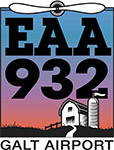Increased performance due to colder than standard temperature is a good thing, but it can take inexperienced pilots by surprise when the airplane leaps off the runway in less than 400 feet and reaches traffic pattern altitude with alarming efficiency! Better performance changes a few things that might come as a surprise to students and newer pilots. In addition to a shockingly shorter takeoff roll, climb performance will also be greatly improved in colder temps. So how does all this affect aircraft in the traffic pattern? The first factor is that when your takeoff ground roll is shorter, your climb out begins sooner. Combined with a much steeper rate of climb, you will reach the point of turning crosswind (300 feet below traffic pattern altitude) in a shorter distance than usual. When you make your turn to downwind you might find yourself already pretty close to the midfield downwind position. Because you covered less distance in the upwind leg, there will be a shorter distance than you might normally expect in the downwind leg.

